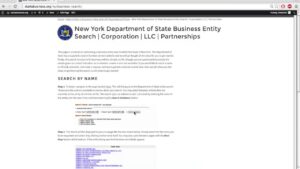Malwarebytes S-1-5-21-719432545-3696842814-3937962003-1002 refers to a specific user profile or system identifier entry in the software. It typically appears when Malwarebytes logs system activities or detects anomalies associated with certain Windows user accounts. These entries can sometimes indicate registry issues or leftover data linked to past scans or user activities.
If Malwarebytes S-1-5-21-719432545-3696842814-3937962003-1002 causes errors, checking the registry and software logs may help identify the issue. Resolving the problem might involve cleaning the registry, updating the software, or reinstalling Malwarebytes. Proper troubleshooting ensures the software runs smoothly and avoids system conflicts related to user identifiers.
What Does Malwarebytes S-1-5-21-719432545-3696842814-3937962003-1002 Indicate?
Malwarebytes S-1-5-21-719432545-3696842814-3937962003-1002 indicates a specific user profile or security identifier (SID) logged by the software. This entry is often related to tracking activities associated with a particular Windows account during scans. It ensures that Malwarebytes can monitor and address potential threats specific to that user’s environment.
When Malwarebytes S-1-5-21-719432545-3696842814-3937962003-1002 appears, it may also suggest leftover registry entries tied to previous scans or configurations. These identifiers help the software maintain accuracy in threat detection and system maintenance. If the entry causes issues, reviewing Malwarebytes logs and running a registry cleaner may resolve any conflicts.
How To Fix Malwarebytes S-1-5-21-719432545-3696842814-3937962003-1002 Errors?
- Restart Your System
- Begin by restarting your computer to ensure the issue isn’t caused by a temporary glitch.
- After rebooting, check if the error still appears in Malwarebytes logs.
- Update Malwarebytes Software
- Open Malwarebytes and go to the Settings or About section.
- Ensure the software is updated to the latest version, as outdated versions may cause conflicts.
- Run a Full System Scan
- Perform a full scan to detect any malware or corrupted files related to the error.
- If threats are found, follow the prompts to quarantine or remove them.
- Check Malwarebytes Logs for Conflicts
- Navigate to the logs section in Malwarebytes to locate entries related to S-1-5-21-719432545-3696842814-3937962003-1002.
- Identify any inconsistencies or repeated errors in the logs that might point to the issue.
- Clean the Windows Registry
- Use a registry cleaner to remove invalid or redundant entries linked to the error.
- Be cautious when cleaning the registry to avoid removing essential system files.
- Reinstall Malwarebytes if Necessary
- If the error persists, uninstall Malwarebytes from your system.
- Download and install the latest version from the official Malwarebytes website.
- Verify User Account Settings
- Check if the related user account on your system is active and functioning properly.
- If the issue involves a corrupted user profile, consider creating a new profile.
- Contact Malwarebytes Support
- If the issue continues, reach out to Malwarebytes support for further assistance.
- Provide them with details from the logs to help diagnose and resolve the problem effectively.
Following these steps ensures a comprehensive approach to resolving Malwarebytes S-1-5-21-719432545-3696842814-3937962003-1002 errors and maintaining smooth software performance.
Is S-1-5-21-719432545-3696842814-3937962003-1002 A Malwarebytes Issue?
S-1-5-21-719432545-3696842814-3937962003-1002 is not exclusively a Malwarebytes issue but rather a Windows security identifier (SID) that the software logs during scans. Malwarebytes uses this SID to associate detected threats and system activities with specific user profiles. This identifier ensures accurate tracking of issues tied to the corresponding Windows account.
If the S-1-5-21-719432545-3696842814-3937962003-1002 entry causes errors or appears frequently, it may indicate a conflict between Malwarebytes and the system’s registry or user settings. In such cases, reviewing Malwarebytes logs or reinstalling the software can help resolve the problem. This ensures smooth performance by addressing any configuration issues between Malwarebytes and the system.
Why Is Malwarebytes Showing S-1-5-21-719432545-3696842814-3937962003-1002?
Malwarebytes displays this type of security identifier (SID) to track activity or threats linked to a specific user profile in Windows. This ensures that any malware detected or system changes monitored are accurately associated with the relevant account. Such identifiers help the software manage and isolate issues effectively within multi-user environments.
This entry may also appear due to registry inconsistencies or leftover data from previous scans or removed profiles. It ensures that Malwarebytes continues to function correctly, even with changing user configurations. If the entry persists or causes errors, reviewing logs or resetting affected user profiles can help resolve the issue.
How To Remove Malwarebytes S-1-5-21-719432545-3696842814-3937962003-1002 Entries?
To remove these entries, start by opening Malwarebytes and checking the logs for related records under the Reports or History section. Identify any quarantined items or system events linked to the user identifier causing the issue. Deleting these records from the logs ensures that unnecessary entries are cleared from the software.
Use a registry cleaner tool to scan and remove any leftover registry entries related to the identifier. Be cautious while cleaning the registry to avoid deleting critical system files. If issues persist, reinstalling Malwarebytes can reset the software and eliminate redundant entries.
Does S-1-5-21-719432545-3696842814-3937962003-1002 Indicate A Registry Problem?
This type of identifier can indicate a registry issue if it appears frequently or causes conflicts within the system. It may point to outdated or corrupted entries tied to user profiles or software configurations. Inconsistent registry data can affect how programs like Malwarebytes associate activities with specific user accounts.
If the identifier persists in logs or causes errors, it could signal that the system retains unnecessary or broken entries. Using a registry cleaner helps identify and remove these problematic records to restore smooth operation. Regular maintenance of the registry ensures proper functionality and reduces the chance of future conflicts.
The appearance of S-1-5-21-719432545-3696842814-3937962003-1002 suggests the system is tracking user-related activities or encountering registry inconsistencies. Proper troubleshooting, such as cleaning the registry or reinstalling software, ensures smooth functionality. Regular maintenance helps prevent future errors and keeps both the system and associated software running efficiently.
Read more at our website.












